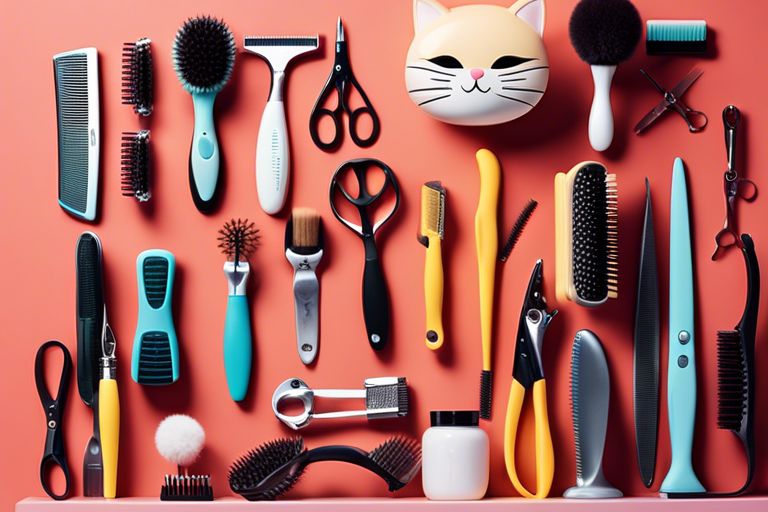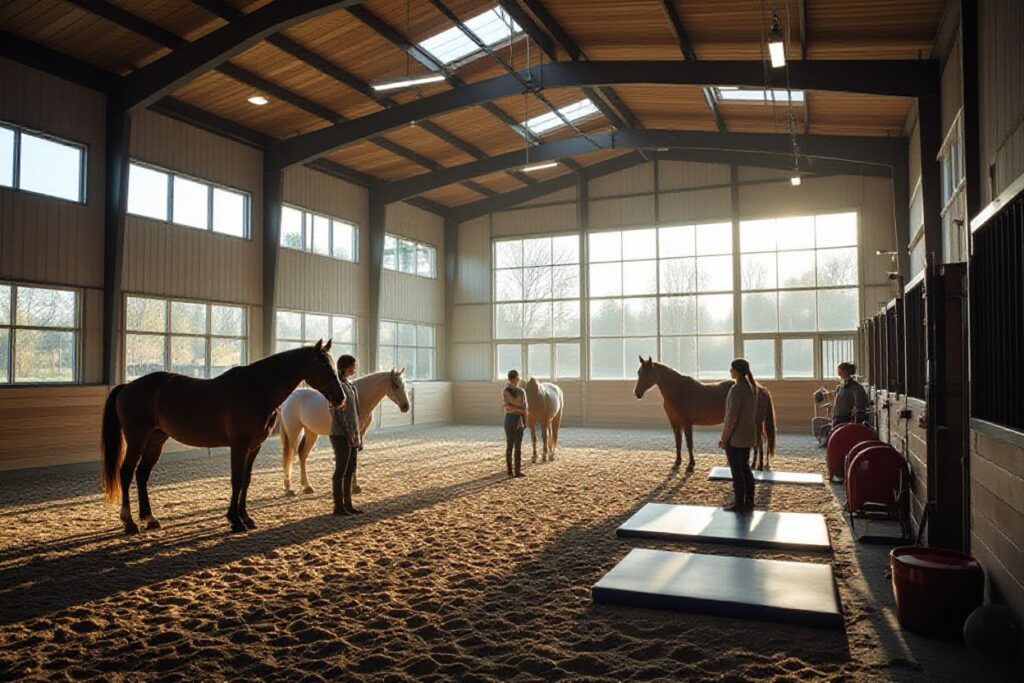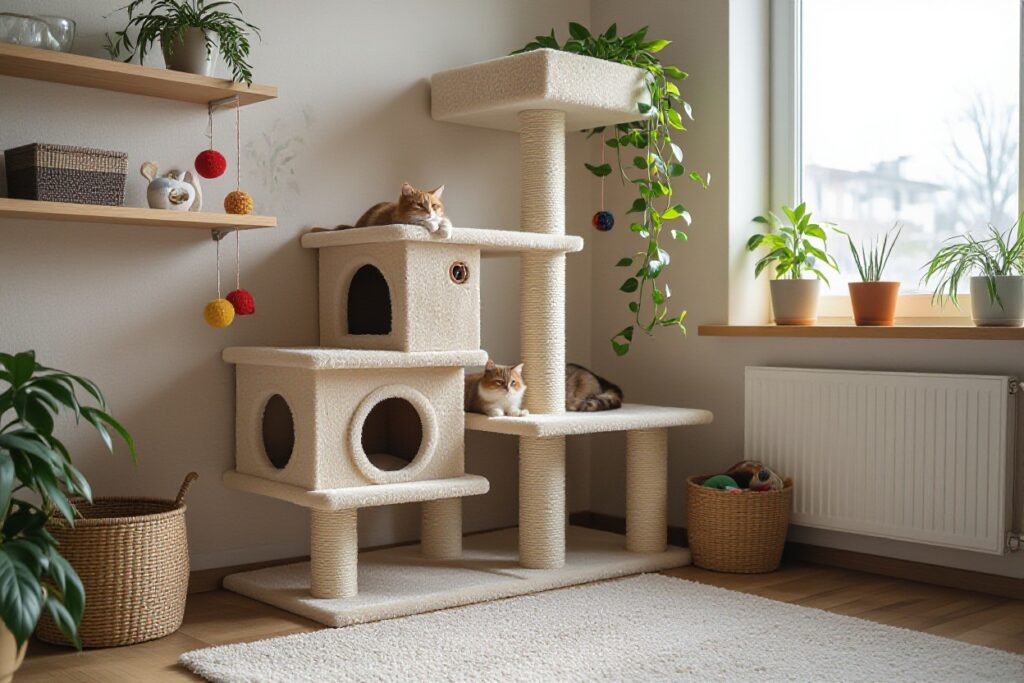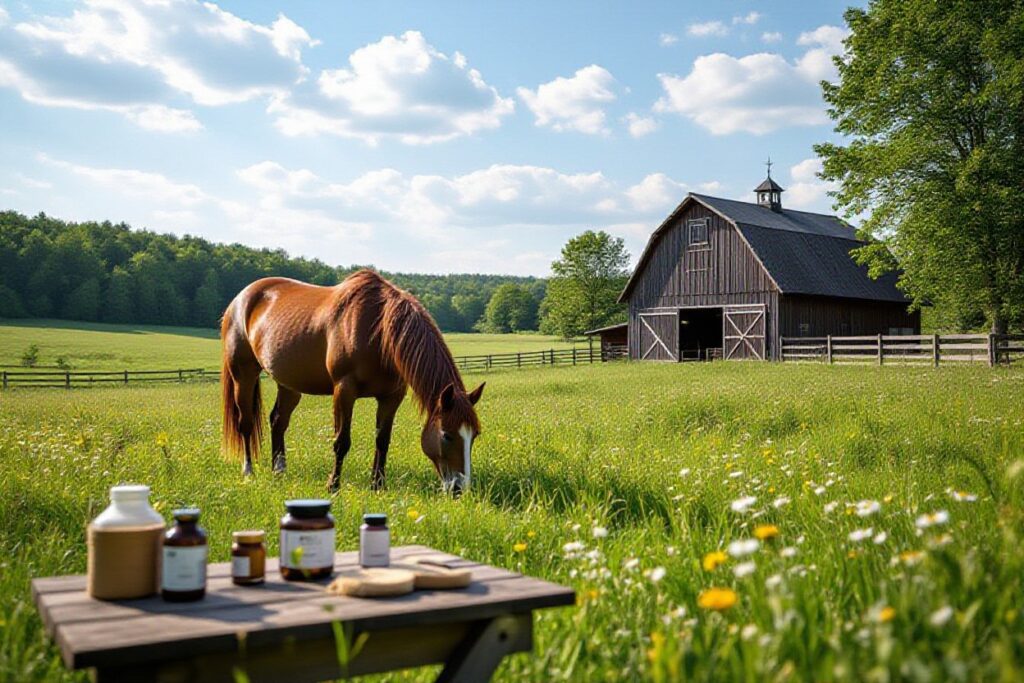Grooming your feline friend is an essential part of maintaining their overall health and well-being. With the right tools and know-how, you can make the grooming process a breeze for both you and your cat. In this tutorial, we will explore the essential cat brushes and tools that every cat owner should have in their grooming arsenal, and how to use them effectively to keep your cat looking and feeling their best.
Many cat owners may feel overwhelmed when it comes to grooming, but with the right guidance and tools, grooming can become a simple and enjoyable task for both you and your cat. This tutorial will provide you with all the information you need to make grooming a stress-free and beneficial experience for both you and your feline companion.
Key Takeaways:
- Regular grooming is essential: Regular grooming not only helps keep your cat looking their best but also helps maintain their overall health and well-being.
- Choose the right brush: Different types of cat coats require different types of brushes, so it’s important to choose the right one for your cat’s specific needs.
- Invest in essential grooming tools: Alongside brushes, tools such as nail clippers, combs, and deshedding tools are essential for maintaining your cat’s grooming routine.
- Be gentle and patient: Grooming should be a positive experience for your cat, so be gentle and patient, especially if they are not used to being groomed.
- Regular grooming can prevent matting and hairballs: By staying on top of your cat’s grooming routine, you can prevent matting and hairballs, which can be uncomfortable for your cat and lead to health issues.
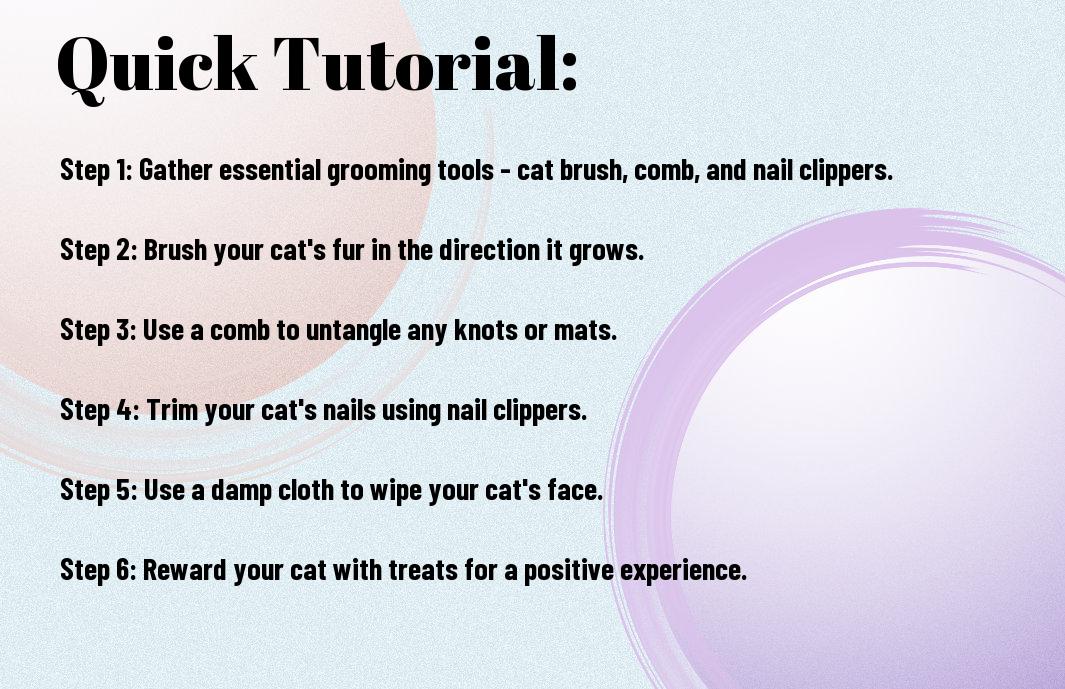
Types of Cat Brushes and Their Uses
Assuming you want to keep your feline friend’s coat in top condition, it’s important to understand the different types of cat brushes and their specific uses. By choosing the right brush for your cat’s unique coat, you can ensure that grooming is a breeze and that your cat stays healthy and happy. To help you navigate the world of cat brushes, here’s a breakdown of the most common types and their uses:
| Brush Type | Uses |
|---|---|
| Bristle Brushes | For regular grooming and distributing natural oils |
| Wire-Pin Brushes | For removing tangles and mats in long-haired cats |
| Slicker Brushes | For removing loose fur and preventing mats |
| De-shedding Tools | For reducing shedding and preventing hairballs |
Bristle Brushes
On the topic of bristle brushes, these are best suited for cats with short to medium-length hair. The soft bristles help to remove loose fur, distribute natural oils, and stimulate the skin, promoting a healthy coat and circulation.
Wire-Pin Brushes
Types of wire-pin brushes are ideal for cats with long or dense coats. The wire pins help to remove tangles and mats without causing discomfort to your feline friend. Regular use of a wire-pin brush can help prevent matting and keep your cat’s coat looking sleek and shiny.
The use of wire-pin brushes is especially suitable for cats with double coats, such as Persians or Maine Coons, as the longer hair can easily become tangled and matted if not properly maintained.
Slicker Brushes
Brushes designed with slicker bristles are great for removing loose fur and preventing mats in all coat types. The fine wire bristles can reach deep into the coat to remove dead fur and debris, leaving your cat’s coat smooth and tangle-free.
This type of brush is particularly effective for cats with medium to long hair, helping to keep their coat healthy and free from knots and tangles.
De-shedding Tools
Uses for de-shedding tools include reducing shedding and preventing hairballs. These tools are designed to remove loose fur from your cat’s undercoat, helping to minimize shedding and the formation of hairballs.
Brushes with de-shedding properties are especially beneficial for cats that shed heavily, such as Siamese or Himalayan breeds, as they can help to control the amount of loose fur in your home and on your cat’s coat.
Additional Essential Grooming Tools
Unlike cat brushes, there are a few additional grooming tools that are essential for keeping your feline friend looking and feeling their best. These tools are designed to help maintain your cat’s overall health and hygiene, and are important additions to your grooming routine.
Nail Clippers
Essential for keeping your cat’s claws in check, nail clippers are a must-have grooming tool. Regular nail trims are important for preventing your cat from getting their claws caught in furniture, as well as reducing the risk of scratches to you and other family members. It’s important to use specially designed cat nail clippers to ensure a safe and precise trim.
Grooming Gloves
Any cat owner knows that grooming can sometimes be a challenge, especially with cats who are not fond of traditional brushes. Grooming gloves are a fantastic alternative, allowing you to easily remove loose fur and give your cat a gentle massage at the same time. With their textured surface and flexible design, grooming gloves are effective for removing shedding hair and giving your cat’s coat a sleek, smooth appearance.
With Grooming Gloves, you’ll be able to easily remove loose fur and give your cat a gentle massage at the same time. The textured surface and flexible design make them effective for removing shedding hair and giving your cat’s coat a sleek, smooth appearance. They are a great addition to your grooming toolkit.
Flea Combs
Additional to regular brushing, flea combs are essential for keeping your cat flea-free and their coat healthy. These fine-toothed combs are designed to catch and remove fleas, flea eggs, and flea dirt from your cat’s fur. Regular flea combing can help prevent infestations and keep your cat comfortable and itch-free.
To keep your cat flea-free and their coat healthy, flea combs are essential for catching and removing fleas, flea eggs, and flea dirt. Regular flea combing can help prevent infestations and keep your cat comfortable and itch-free. It is an important tool to have in your grooming arsenal.
Mat Splitters
Any cat owner with a long-haired feline knows that mats and tangles can be a common problem. Mat splitters are essential tools for gently and safely removing these tough knots without causing discomfort to your cat. These specialized grooming tools are designed to carefully separate and cut through mats, leaving your cat’s coat looking smooth and tangle-free.
Gloves are essential for gently and safely removing tough mats and tangles without causing discomfort to your cat. These specialized grooming tools are designed to carefully separate and cut through mats, leaving your cat’s coat looking smooth and tangle-free. They are a valuable addition to your grooming routine.
Grooming Wipes
Gloves are an important addition to your grooming routine, offering a convenient way to keep your cat clean and fresh between baths. Whether it’s cleaning up a messy face after a meal or freshening up your cat’s coat, grooming wipes are effective for removing dirt, dander, and odor. They are especially useful for cats who may not tolerate traditional baths or for spot cleaning between grooming sessions.
Flea, dander and odor are effectively removed by Gloves. They are especially useful for cats who may not tolerate traditional baths or for spot cleaning between grooming sessions. Grooming wipes are an important addition to your grooming routine, offering a convenient way to keep your cat clean and fresh.
Selecting the Right Brush for Your Cat
Now that you’ve recognized the importance of grooming, it’s time to select the right brush for your cat. Not all brushes are created equal, and the type of brush you choose will depend on your cat’s coat type and any sensitivities they may have.
Consider Your Cat’s Coat Type
On considering your cat’s coat type, it’s essential to choose a brush that is suitable for their specific needs. Cats with short, smooth coats will require a different type of brush than cats with long, dense coats. Understanding your cat’s coat type is key to ensuring you select the most effective brush for their grooming needs.
Any groomer, whether professional or home-based, would benefit from having the right tools to address the different coat types. Your cat’s comfort and cleanliness hinge on your ability to address their grooming needs effectively and efficiently. Finding the right brush for their coat type is the first step to achieving this.
Addressing Sensitive Skin Issues
With addressing sensitive skin issues, it’s important to choose grooming tools that are gentle and non-irritating. Cats with sensitive skin can easily become agitated or uncomfortable during grooming if the wrong brush is used. It’s crucial to prioritize their comfort and well-being when selecting grooming tools.
Sensitive skin issues can be exacerbated by using the wrong grooming tools, leading to discomfort and potential skin problems for your cat. By selecting the right brush for their sensitive skin, you can help prevent any unnecessary discomfort and promote a positive grooming experience for your feline friend.
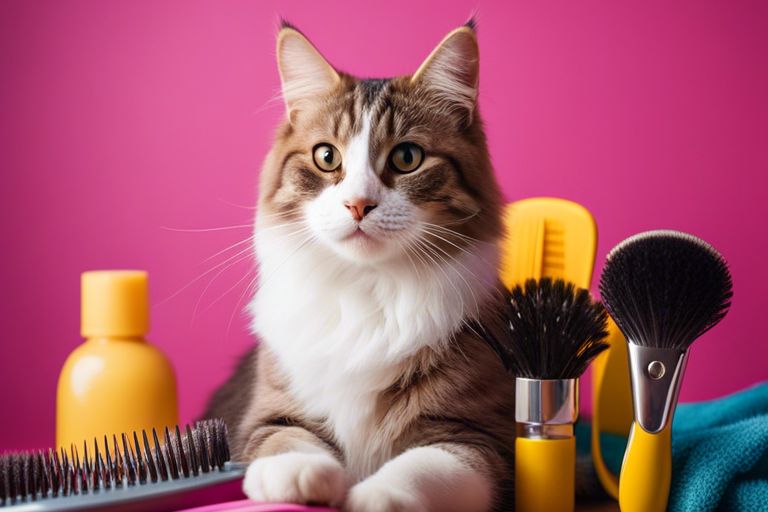
Brushing Techniques for Optimal Results
The Basics of Cat Brushing
To ensure that your cat’s coat remains healthy and free from tangles, it is important to brush them regularly. Begin by gently stroking your cat with your chosen brush to help them get used to the sensation. Then, delicately brush in the direction of your cat’s fur growth to avoid tugging or pulling, paying particular attention to areas such as the back, underarms, and belly.
To prevent any discomfort, be sure to use a light hand and stop immediately if your cat shows any signs of distress. Regular brushing not only helps to remove loose hair and prevent matting, but it also promotes circulation and stimulates natural oils production, ultimately leading to a shiny, healthy coat.
Tips for Brushing Long-haired Cats
For long-haired cats, it is crucial to use a wide-tooth comb or a slicker brush to effectively manage their coat. Start by gently separating the fur with your fingers before using the brush or comb to work through any knots or tangles. This will help prevent pain or discomfort for your feline friend. Recognizing the different textures of your cat’s hair, such as undercoat and guard hairs, can also aid in choosing the most suitable brush for their needs.
- Use a wide-tooth comb or slicker brush for long-haired cats
- Separate the fur with your fingers before brushing or combing
For instance, regular brushing is essential for long-haired breeds such as Maine Coons or Persians to prevent matting and maintain a healthy coat. Understanding the specific needs of long-haired cats will help ensure that they receive the appropriate grooming care.
Brushing Short-haired Cats
Cats with short hair also benefit from regular brushing to remove loose fur and distribute natural oils. A soft bristle brush is suitable for short-haired cats as it is gentle on their skin while effectively removing any loose hair. Cats with short hair may not require as much grooming as their long-haired counterparts, but regular brushing will still contribute to a healthy coat and overall well-being.
Optimal grooming practices for short-haired cats involve using a soft bristle brush to remove loose fur and distribute natural oils, ultimately promoting a healthy coat.
The Grooming Routine
Despite the common misconception that cats are self-sufficient when it comes to grooming, regular grooming is essential for maintaining their health and well-being. As part of the grooming routine, it is important to invest in the right tools and brushes for your cat. To help you in this process, you can check out The 10 Best Cat Brushes of 2024, Tested and Reviewed to find the most suitable grooming tools for your feline friend.
Establishing a Regular Grooming Schedule
For a successful grooming routine, it is important to establish a regular grooming schedule with your cat. This will not only help in maintaining their coat and skin health but also create a bonding experience between you and your pet. By incorporating grooming into your daily or weekly routine, your cat will become more accustomed to the process and feel more comfortable with it over time.
Creating a Relaxing Environment for Grooming
Regular grooming can be a stressful experience for some cats, so creating a calming and relaxing environment is crucial. Choose a quiet and peaceful space for grooming, free from distractions and loud noises. Additionally, using soothing music or pheromone sprays can help to create a tranquil atmosphere, making the grooming experience more pleasant for your cat.
Routine grooming can also help in preventing matting, tangles, and hairballs, allowing your cat to maintain a healthy coat and skin. By establishing a grooming routine and providing a calming environment, you can ensure that the grooming process is a positive experience for both you and your feline companion.
Combining Brushing with Playtime
Grooming can be further enhanced by incorporating it into your cat’s playtime routine. By associating grooming with play, you can make the experience enjoyable for your cat while also ensuring that they receive the necessary grooming care. Using interactive toys or treats during grooming sessions can help in making the process more enjoyable for your cat, resulting in a positive association with grooming.
Environment, grooming schedule, and regular tools.
The grooming routine should be a positive experience for both the cat and the owner. By ensuring a regular grooming schedule, creating a relaxing environment, and incorporating grooming with playtime, you can improve your cat’s overall well-being and strengthen your bond with them.
Common Grooming Challenges and Solutions
Not every cat enjoys grooming, and as a result, pet owners often face common grooming challenges such as mats and tangles, shedding, hairballs, and uncooperative behavior. Fortunately, there are effective solutions to each of these challenges that can make grooming a more pleasant experience for both the cat and the owner.
Dealing with Mats and Tangles
To prevent mats and tangles, regular brushing is essential, especially for long-haired cats. Use a high-quality cat brush or comb to gently work through any knots, starting at the tips of the fur and slowly working your way towards the skin. If your cat has particularly stubborn mats, consider using a detangling spray or seeking assistance from a professional groomer.
Reducing Shedding and Hairballs
To minimize shedding and hairballs, regular grooming is key. Investing in a good quality deshedding tool can help to remove loose fur before it ends up on your furniture or in your cat’s stomach. Additionally, feeding your cat a high-quality diet and providing plenty of water can also help to reduce the occurrence of hairballs.
For instance, omega-3 fatty acids found in fish oil supplements can help improve skin and coat health, ultimately reducing shedding and hairballs. Incorporating these supplements into your cat’s diet can make a significant difference in the amount of loose fur your cat sheds.
Handling an Uncooperative Cat
On occasion, cats may display uncooperative behavior during grooming sessions. It’s important to approach this situation with patience and understanding. Start by creating a calm and comfortable grooming environment, and consider using positive reinforcement, such as treats, to encourage cooperation. If necessary, seek guidance from a professional groomer or veterinarian for techniques to manage your cat’s behavior during grooming.
Reducing stress and anxiety in your cat can also help to improve their cooperation during grooming. This can be achieved by introducing grooming gradually, starting with short sessions and increasing the duration over time. Remaining calm and providing gentle reassurance can also help to alleviate any nervousness your cat may be experiencing.
Advantages of Professional Grooming Services
Keep your feline friend looking and feeling their best with the help of professional grooming services. While regular at-home grooming is important, there are numerous advantages to enlisting the help of a professional groomer. These experts have the knowledge, experience, and tools to ensure your cat receives the best possible care, leaving them with a healthy and happy coat.
When to Consider Professional Grooming
Grooming can be a daunting task for both cats and their owners, especially if your furry friend has a particularly thick or long coat, or if they tend to get easily stressed during grooming sessions. In these cases, professional grooming services can provide the necessary expertise and calm environment to ensure your cat gets the care they need without any unnecessary stress. Additionally, if you notice any skin issues, mats, or excessive shedding that you are unable to manage on your own, it may be time to seek out the help of a professional groomer.
Choosing the Right Grooming Service for Your Cat
Choosing the right grooming service for your cat is essential to ensure that they receive the best care possible. When selecting a groomer, look for one who has experience working with cats and who uses gentle grooming techniques. It’s also important to find a groomer who takes the time to understand your cat’s individual needs and has the necessary tools and products to address any specific grooming concerns, such as de-shedding or mat removal.
Grooming professionals can provide services such as nail trimming, ear cleaning, and even massages, all of which can contribute to your cat’s overall health and wellness. By choosing the right grooming service for your cat, you can ensure that they receive the care they need to maintain a healthy coat and skin, helping to prevent issues such as matting, shedding, and skin irritation.

Conclusion
Hence, it is important to invest in the right cat grooming supplies to keep your feline friend clean and healthy. By using essential brushes and tools, such as slicker brushes, combs, and nail clippers, you can easily maintain your cat’s coat and prevent potential health issues. Regular grooming not only keeps your cat looking its best, but it also helps to reduce shedding and prevent matting, ultimately contributing to your cat’s overall well-being. For a wide selection of high-quality cat grooming supplies, visit Cat Grooming Supplies – Pet Life.
FAQ
Q: What are the essential cat brushes and tools for grooming?
A: Essential cat brushes and tools for grooming include a slicker brush for removing tangles and mats, a fine-toothed comb for detangling and removing loose fur, and a grooming glove for massaging and removing loose fur.
Q: How often should I groom my cat?
A: It is recommended to groom your cat at least 2-3 times a week, but the frequency may vary depending on your cat’s coat length and type. Long-haired cats may require more frequent grooming, while short-haired cats may need less frequent grooming.
Q: What are the benefits of grooming my cat regularly?
A: Regular grooming helps to prevent mats and tangles, reduces shedding and hairballs, promotes healthy skin and coat, and allows you to check for any signs of skin problems or parasites.
Q: How do I introduce grooming to my cat?
A: Introduce grooming to your cat gradually and use positive reinforcement. Start with short grooming sessions, offer treats, and use a gentle approach to help your cat feel comfortable and relaxed during grooming.
Q: Are there any grooming tips for dealing with a cat who dislikes grooming?
A: For cats who dislike grooming, try using a grooming glove for a gentle massage, offering treats and rewards, using calming pheromones, and seeking professional help from a groomer or veterinarian if needed.
